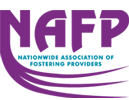 The Nationwide Association of Fostering Providers (NAFP) is today calling upon local authorities to stop using 28 day contracts with independent and voluntary sector fostering providers (IFPs) as holding placements for vulnerable children. The 28 day contract allows a local authority additional time to identify a placement within the local authority’s preferred internal provision ('in-house'). For some children who have started to settle well into their independent placement, the use of this policy can result in an additional unnecessary and potentially harmful placement move. In May 2013, a Freedom of Information request was sent to all local authorities in England enquiring about the policy used when placing children in external placements. The survey suggests that as many as 33 local authorities are openly placing specific time restrictions on independent sector placements. Responses included:
NAFP believes that this represents just the tip of an iceberg. Its members have described that, on occasion, children are moved back into local authority in-house placements despite professional social work views that the child is starting to settle and would benefit from remaining in their independent placement. Some providers claim that at the end of a 28 day contract, commissioners ask to negotiate a new 28 day term to afford the local authority with further time to source a placement with in-house carers. Harvey Gallagher, Chief Executive of NAFP, said 'This practice is bad for children. It provides additional uncertainty for the child and means carers cannot engage in meaningful work with the child to build a trusting relationship. Placement matching processes need to be revised to prioritise the needs of the child and not the needs of a service.' Source: www.nafp.co.uk/userfiles/131018%20NAFP%20Local%20authority%20policy%20of%20prioritising%20in-house%20foster%20carers%20causes%20instability%20for%20children%20in%20care.pdf Comments are closed.
|
News & JobsNews stories and job vacancies from our member agencies, the fostering sector and the world of child protection and safeguarding as a whole. Browse Categories
All
|
|
The Fairer Fostering Partnership
c/o TACT Fostering Innovation House PO Box 137 Blyth NE24 9FJ |

 RSS Feed
RSS Feed
